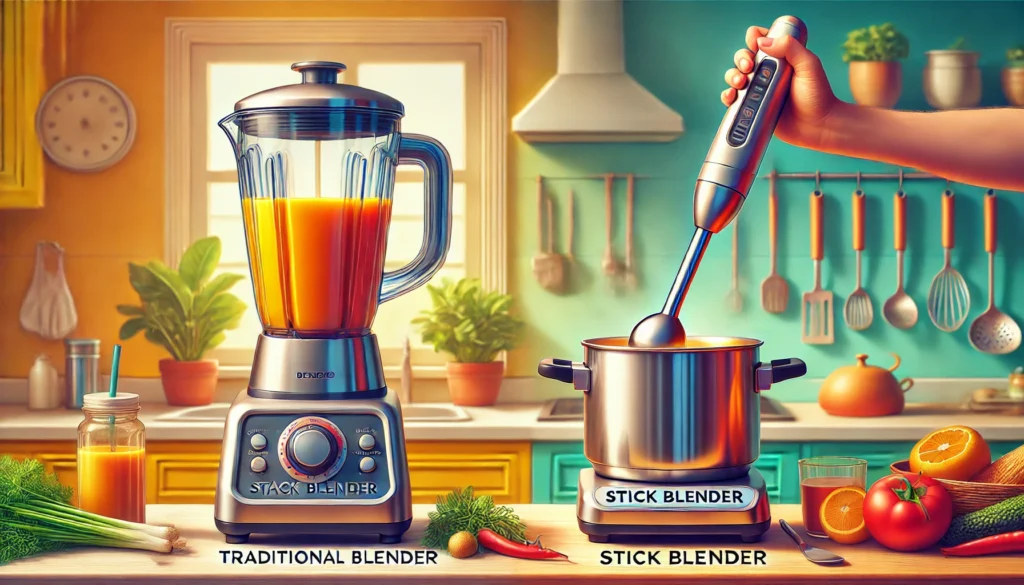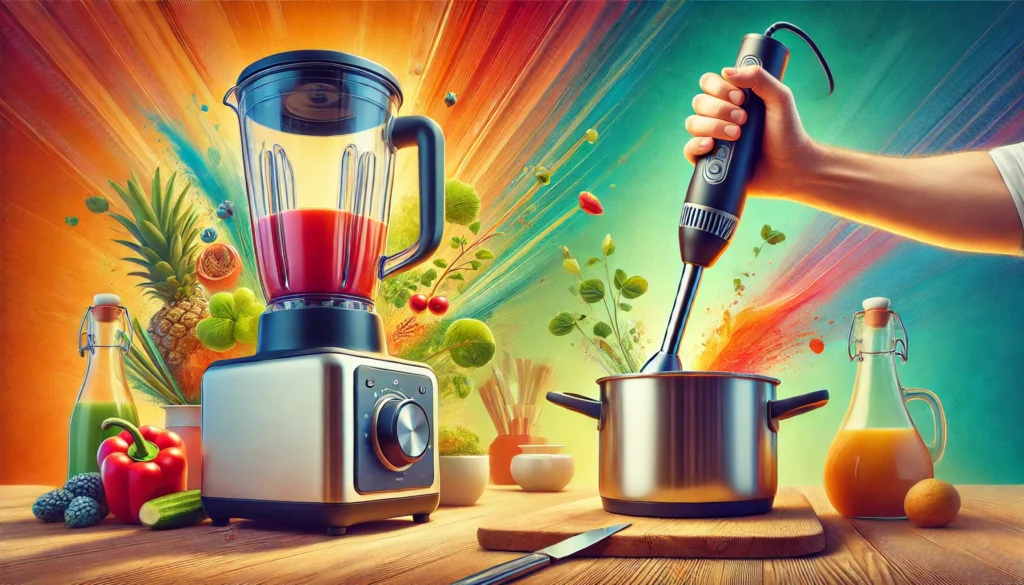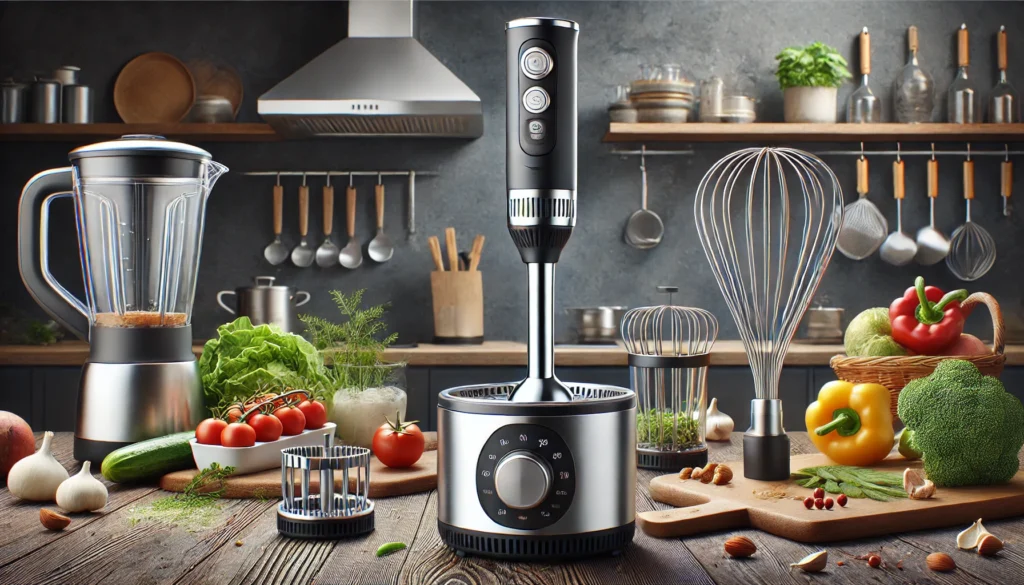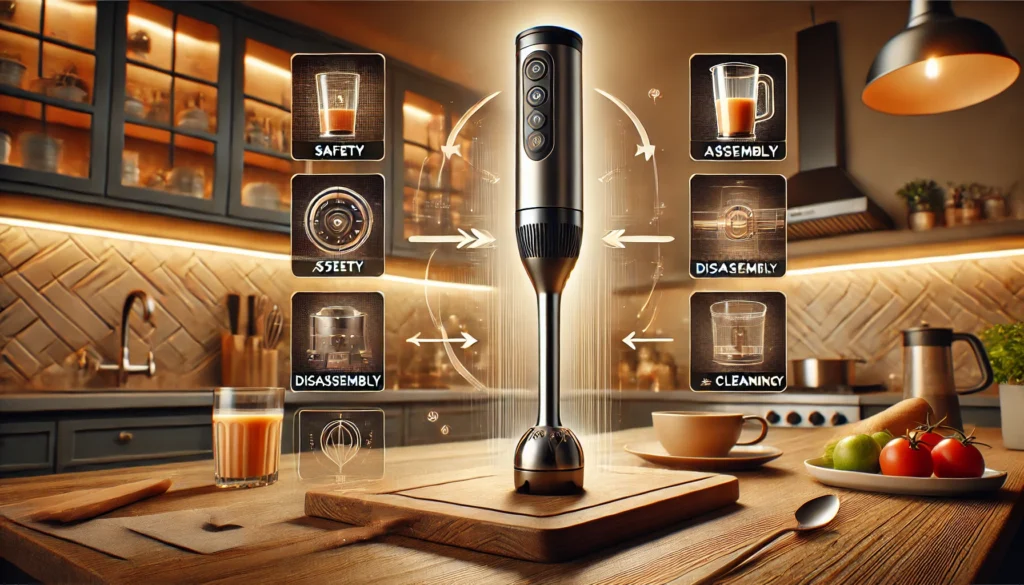A stick blender, also called a hand mixer or immersion blender, is a compact and versatile tool perfect for blending soups, smoothies, and even plant-based concoctions for gardening. Whether you’re a novice or a seasoned DIY enthusiast, this handy device makes blending tasks easier and more creative.
Benefits of Using a Stick Blender in Kitchen and Garden

People love this small blender for its simplicity and ergonomic design. You can quickly blend, puree, or chop without transferring food between containers. In the kitchen, it turns chunky soups into velvety delights and whips up fresh dressings. In the garden, it helps mix compost teas, liquid fertilizers, or herbal remedies with precision and ease.
Traditional vs. Handheld Blenders: What You Need to Know

Unlike bulky countertop blenders with large pitchers, the handheld version is lightweight and portable. It allows you to blend directly in pots or bowls, saving time and reducing cleanup. The freedom it offers lets you control your blending with fewer dishes to wash afterward.
Key Components Explained
Every handheld blender consists of three main parts: the motor housing, blending arm, and blade. The motor provides power, typically positioned for easy grip. The arm extends the blade into your mixing vessel, while the blade performs chopping, mixing, or pureeing. Together, they handle tasks quickly and efficiently.
What to Look for When Choosing Your Stick Blender

Look for multiple speed settings, durable stainless steel blades, and useful attachments like whisks or choppers. These features expand what you can create, from soups to sauces and beyond. For general use, a motor of 200–300 watts is fine, but higher wattage (500+) is better for tougher ingredients.
How to Use Your Blender Safely and Effectively
Always ensure your device is correctly assembled before use and unplug it when attaching or removing parts. Cleanliness is vital, especially when switching between kitchen and garden applications to prevent cross-contamination.
Quick and Easy Recipes to Try
Make creamy soups or refreshing smoothies by blending ingredients directly in your pot or glass. Whip up homemade dressings and sauces easily by combining oil, vinegar, herbs, and spices until smooth.
Tips for Gardening Applications
Put vegetable scraps, livestock manure, and water in the solution and cook nutrient-rich food rich in nutrients. You can clean herbs such as basil or mint with natural agents by mixing them with oil or water.
Keeping Your Blender Clean and Maintained

Rinse immediately after use to prevent food drying on the blades. Detach the blending arm for thorough cleaning, but never submerge the motor. Use gentle cleaning methods to keep blades sharp and maintain performance.
Troubleshooting Common Issues
If your blender isn’t blending well, check for blockages around the blade. Overheating can occur if used continuously—allow it to cool before resuming. Clean blades carefully, especially after thick or sticky mixtures.
Conclusion

This versatile stick blender is more than just a thing – it improves both cooking and gardening. Mastery in use will save you time, and your results will improve, whether you are preparing food or nourishing plants.
Using a Blender Bottle is easy and efficient. Simply add your liquid first, then your powder or ingredients. Drop in the wire whisk ball, screw the lid on tightly, and shake for 20–30 seconds. It blends everything smoothly—perfect for protein shakes, smoothies, or even salad dressings on the go.

